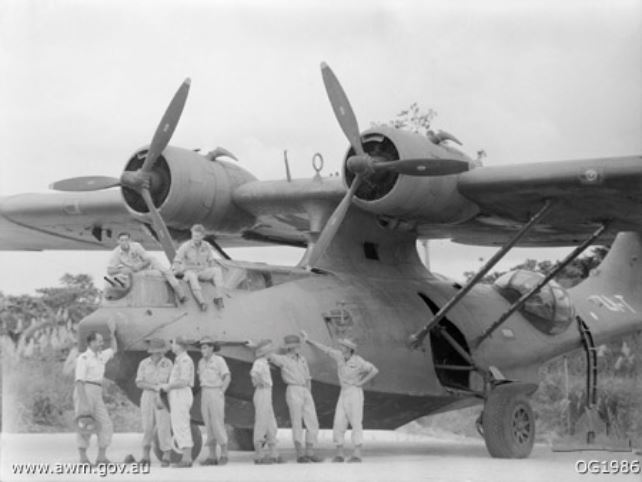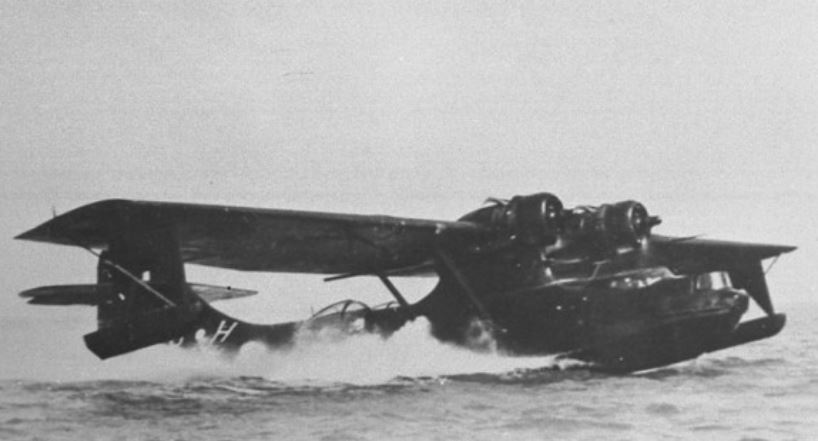Difference between revisions of "No. 111 Air Sea Rescue Flight RAAF"
From Our Contribution
(Created page with "{{Infobox | name = | title = | above = | subheader = | image = [[File:]] | caption = | image2 = | caption2...") |
|||
| (2 intermediate revisions by the same user not shown) | |||
| Line 5: | Line 5: | ||
| subheader = | | subheader = | ||
| − | | image = [[File:]] | + | | image = [[File:111_ASR.jpg]] |
| − | | caption = | + | | caption = A No. 111 Flight crew with a Catalina in early 1945. AWM photo OG1986 |
| − | | image2 = | + | | image2 = [[File:111_ASR_2.jpg]] |
| − | | caption2 = | + | | caption2 = Catalina A24-37 on take off - Served with 111 ASRF from 24 Jul 1945 |
| − | |||
}} | }} | ||
==Brief History== | ==Brief History== | ||
| − | '''No. | + | '''No. 111 Air-Sea Rescue Flight''' was formed at Madang, Papua New Guinea on 13 Dec 1944. The unit used [[Consolidated PBY Catalina]] aircraft to carry out search and rescue operations, often in co-operation with the local air-sea rescue launch. The Catalinas were also used in strike operat1ons against Japanese positions in the vicinity and to cover other aircraft engaged in similar operations. |
| − | + | Unit personnel dropped supplies on behalf of the Australian New Guinea Administration Unit (ANGAU), earned out practice dinghy drops, evacuated wounded personnel and escorted distressed aircraft to safe landings. On 18 Mar 1946, No. 111 Air-Sea Rescue Flight moved from Madang to Port Moresby. It was disbanded on 24 Jan 1947 and absorbed into | |
| + | RAAF Station Port Moresby. | ||
| Line 33: | Line 33: | ||
| − | [[Category:RAAF | + | [[Category:RAAF]] |
Latest revision as of 16:15, 25 January 2021
 A No. 111 Flight crew with a Catalina in early 1945. AWM photo OG1986 | |
 Catalina A24-37 on take off - Served with 111 ASRF from 24 Jul 1945 |
Brief History
No. 111 Air-Sea Rescue Flight was formed at Madang, Papua New Guinea on 13 Dec 1944. The unit used Consolidated PBY Catalina aircraft to carry out search and rescue operations, often in co-operation with the local air-sea rescue launch. The Catalinas were also used in strike operat1ons against Japanese positions in the vicinity and to cover other aircraft engaged in similar operations.
Unit personnel dropped supplies on behalf of the Australian New Guinea Administration Unit (ANGAU), earned out practice dinghy drops, evacuated wounded personnel and escorted distressed aircraft to safe landings. On 18 Mar 1946, No. 111 Air-Sea Rescue Flight moved from Madang to Port Moresby. It was disbanded on 24 Jan 1947 and absorbed into RAAF Station Port Moresby.
Unit Personnel
Notes
Content has come from Units of the Royal Australian Air Force - A Concise History - Volume 8 Training Units - Australian Government Publishing Service - 1995 pages 4 & 5.